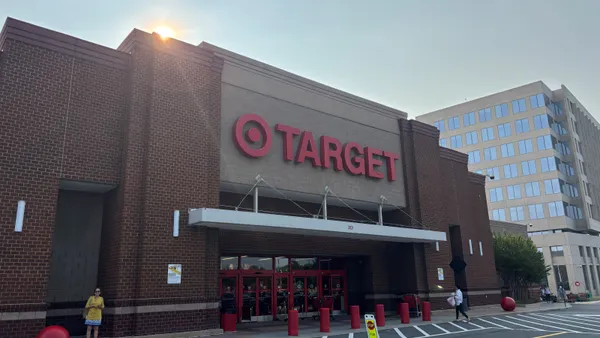Dive Brief:
-
Under Armour is scoring with its new Hovr running shoes, released last week and positioned to compete with the Adidas Boost line and Nike Epic Flyknit React. Jefferies analyst Randy Konik in a note Sunday said the new line is prompting a strong initial response from shoppers, according to a report from the Street.
-
"We noted heavy conversion around both [the Hovr Sonic and Hovr Phantom], sales associate commentary was positive, and the Phantom was already out of stock in many sizes/colors online, a good sign given the $130 to $140 ticket vs. most of the running line at $70 to $90," Konik wrote, according to the Street report.
-
The report comes amid sports leisure footwear sales' outperformance in the U.S. athletic shoe industry, which overall rose 2% to $19.6 billion last year, according to a report emailed to Retail Dive from NPD Group. Unit sales also grew by 2% and average selling price remained flat at $58.16, according to the report. The women's market grew the fastest, with sales up 5% year over year, while men's, the largest segment, and kids each grew sales by 1%, NPD said.
Dive Insight:
Under Armour's Hovr shoes combine digital and physical technologies that promise comfort and performance, and embed wearers in the company's "Connected Fitness" ecosystem.
The shoes sport a connected sensor that tracks distance, cadence, pace and shoe life. Under Armour president and chief operating officer Patrik Frisk said the Connected Fitness system now has more than 220 million registered users and growing, according to a Seeking Alpha transcript of the company's third quarter conference call. "The HOVR launch demonstrates the first true manifestation of digital meeting physical, providing runners with advantages that make them better, smarter and capable of more than they ever knew possible," he said.
The Hovr line and similar offerings from rivals is exactly what the market needs in order to avoid the heavy discounting that drove sales last year, according to Matt Powell, NPD Group senior industry advisor in sports.
"This was one of the most promotional years in decades for the athletic footwear industry," Powell warned in a note emailed to Retail Dive. "While promotions helped drive sales in 2017 and the product mix kept the average selling price flat, it was a double-edged sword for the industry, as its performance was not as healthy as in more recent years."
Sports leisure footwear styles are emerging as a consumer preference. On the performance side, running shoe sales fell 7%, and training sales declined 15%, while leisure styles grew 17% and captured $9.6 billion in sales in 2017. Overall, performance sales declined 10% to $7.4 billion, a rate that has accelerated for the last two years, according to NPD.
"I often get asked whether the bubble around leisure will burst anytime soon, and the answer is no," Powell said. "There is not a single performance shoe in the top ten list for 2017, which illustrates the sportswear fashion cycle we are in. Athleisure rules the runway, and the line between what is an athletic shoe and a casual shoe continues to blur. Brands and retailers must continue to feed this trend."
Nike/Brand Jordan, Adidas, Sketchers, Under Armour and New Balance were the top-selling brands based on dollar sales in 2017, according to the report. NPD found Adidas to be the fastest-growing player in the market overall, growing its sales by over 50%. While the list of top 10 selling shoes was dominated by Nike and Brand Jordan, Adidas had two shoes on the list this year — Superstar and Tubular Shadow.
Sports footwear sales during the third and fourth quarters — which include key seasons for the market, back-to-school and holiday — were about the same, NPD said. Hit by price promotions, fourth quarter sales grew 4% compared to the year-ago period.











